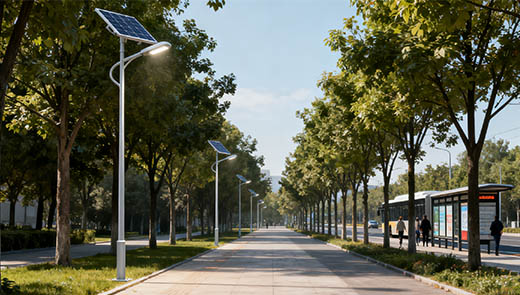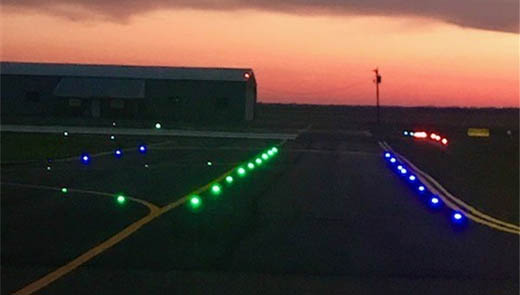Ultimate Guide: How to Choose the Right All-in-One Solar Street Light?
Are you searching for a sustainable, cost-effective, and low-maintenance lighting solution for your outdoor space? All-in-one solar street lights have become the preferred choice for outdoor lighting due to their core advantages of efficiency, convenience, and environmental friendliness. Whether for residential area renovations, commercial complex installations, municipal road upgrades, or industrial zone lighting, selecting the right all-in-one solar street light requires comprehensive consideration of its design, components, type, and core performance. This article will provide you with a thorough understanding of the relevant knowledge to help you make an informed decision.
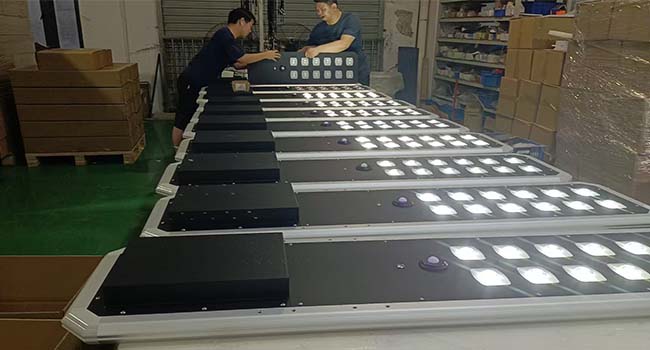
What Is an All-in-One Solar Street Light?
An all-in-one solar street light is an integrated lighting system that combines four core components—solar panels, LED light sources, rechargeable batteries, and controllers—into a single compact unit. Unlike traditional solar street lights requiring separate installation of each part, this integrated design eliminates complex wiring and cumbersome installation processes, significantly boosting construction efficiency for both small-scale projects and large-scale engineering.
Key advantages include: Compact design: All critical components are integrated into one unit, saving installation time and effort while conserving space. Energy efficiency: Featuring high-efficiency solar panels and LED lighting, it achieves high energy conversion rates and low power consumption, eliminating grid dependency and reducing electricity costs. Smart control: Built-in sensors and intelligent controllers automatically adjust brightness, charging cycles, and on/off times based on environmental conditions, balancing performance and energy savings.
What Are All-in-One Solar Street Lights Made Up Of?
Solar Panel
Located atop the unit, the solar panel serves as the system's power generation unit. It captures sunlight via photovoltaic cells and converts it into electricity. The panel's size and conversion efficiency directly determine the system's power output. Larger panels with higher cell efficiency enable faster charging, ensuring stable illumination even in low-light conditions—a critical feature for areas with poor sunlight exposure.
Battery
The rechargeable battery, positioned beneath the solar panel, stores the electricity generated during daylight hours to power the LED light source at night. As the core energy storage component, the battery's type, capacity, and lifespan are critical factors affecting the street light's operational duration and long-term cost. These aspects require careful consideration based on the specific application's endurance requirements to prevent lighting interruptions due to inadequate battery performance.
LED Light Source
The LED (Light Emitting Diode) light source is the core component for illumination. It is the preferred choice for integrated solar street lights due to three key advantages: high energy efficiency, where most electrical energy is directly converted into light energy with minimal thermal loss, maximizing the utilization of stored solar energy; Extended lifespan, exceeding 50,000 hours under normal operation, significantly reducing replacement frequency and maintenance costs; Robust construction, resistant to impact and vibration, ensuring durability in harsh outdoor environments exposed to wind and sun.
LED brightness is measured in “lumen.” Higher lumen values provide broader illumination coverage and greater brightness. Select appropriate parameters based on the specific lighting requirements of the application scenario.
Charge Controller
The charge controller serves as the “brain” of the entire system, primarily regulating the battery's charging and discharging processes. It prevents daytime overcharging that could damage the battery while also guarding against nighttime over-discharge that shortens battery life, ensuring safe and stable system operation. Additionally, some high-end controllers integrate features like dimming, motion sensing, and scheduling, further enhancing flexibility to meet personalized needs across different scenarios.
Optional Features
Many integrated solar street lights are equipped with additional value-added features to further enhance the practicality and cost-effectiveness. Common optional features include a motion sensor that automatically switches to full brightness when it detects moving objects (pedestrians, vehicles) within 5-15 meters, and low brightness when there are no moving objects, balancing energy efficiency and security needs; and a dimming controller that adjusts brightness according to ambient light intensity or preset time, allowing for finer control of energy consumption without the need for on-site operation, making it more convenient to use.
What Are Types of All-in-One Solar Street Light?
Motion Sensor-Based Lights
Motion Sensor-Based Lights Human body sensor detectors are the core configuration of human body sensor-based street lights, and the working modes are divided into two types of low light and full light: when there is no moving object, it keeps the low light state to save energy, and automatically switches to the low light state when a moving object within the range of 5-15 meters is detected. When a moving object is detected within 5-15 meters, it automatically switches to full brightness mode to provide sufficient illumination. This type of street light is especially suitable for low-traffic areas such as residential alleys, sidewalks, gardens, backyards, etc. It meets the temporary lighting needs, minimizes energy consumption, and provides a certain degree of security and warning at the same time.
Timer-Based Lights
Timer-Based Lights operate according to a preset schedule by presetting a fixed on/off time through the controller, for example, from 7pm to 5am, which is not affected by changes in ambient light and human movement. The advantage is that the lighting time is stable and controllable, which is suitable for parking lots, shopping mall facades, commercial streets and other commercial areas that require constant lighting at fixed times, ensuring the lighting needs during nighttime activities and improving the safety and convenience of the area.
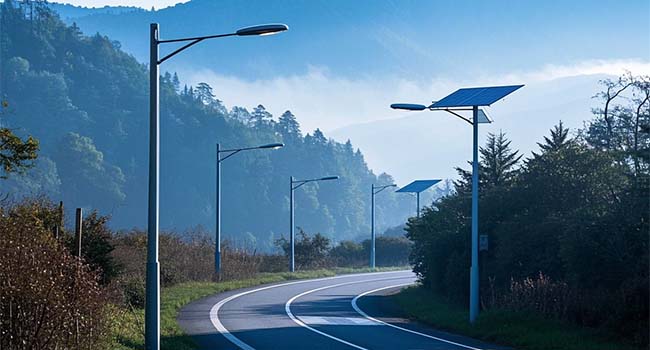
Dusk-to-Dawn Lights
Light-controlled street lights are equipped with photosensitive sensors (photocells) that automatically sense changes in ambient light intensity, turning on the light automatically as the light dims at sunset and turning off automatically as the light brightens at sunrise, realizing unattended automated operation around the clock. This type does not require manual time setting and can adapt to seasonal variations in sunrise and sunset times, making it an ideal choice for high-frequency use areas such as main roads, campuses, public walkways, industrial parks and other areas where nighttime safety can be continuously ensured.
Hybrid Solar Street Lights
Hybrid Solar Street Lights support both solar power and grid power supply modes, giving priority to solar power generation in daily use, and automatically switching to grid power supply when encountering insufficient light such as consecutive cloudy days, rainstorms, or short sunlight hours in winter, avoiding interruption of illumination due to insufficient solar power. This dual power supply mode makes it more adaptable to the environment, especially suitable for areas with unstable light, such as coastal rainy areas, cloudy cities or high latitude areas with short sunlight hours.
What Factors Should You Consider When Choosing an All-in-One Solar Street Light?
Choosing an all-in-one solar street light requires a comprehensive assessment of the following six core factors in conjunction with the use of demand, installation environment and budget in order to select a cost-effective and adaptable product.
LED Lighting Performance
The core function of a street light is to provide sufficient lighting, and the lumen value directly determines the brightness and coverage of the lighting, and the brightness requirements of different application scenarios vary significantly. Among them, main roads, highways, large parks and other high-frequency, high-traffic areas, the need for high-brightness, wide-coverage lighting to protect the safety of passage, recommended to choose 3000-12000 lumens products; residential streets, parking lots, campuses and other medium-traffic areas, the need to seek a balance between brightness and energy saving, 1500-3000 lumens of products to meet the daily demand for lighting and energy consumption is moderate.
In addition, you can also choose the LED color temperature according to the needs of the scene, 3000K warm white light is suitable for creating a warm and comfortable atmosphere, suitable for residential areas, parks and other places; 5000K cold white light lighting clarity is higher, suitable for parking lots, main roads and other need to accurately identify the environment of the scene.
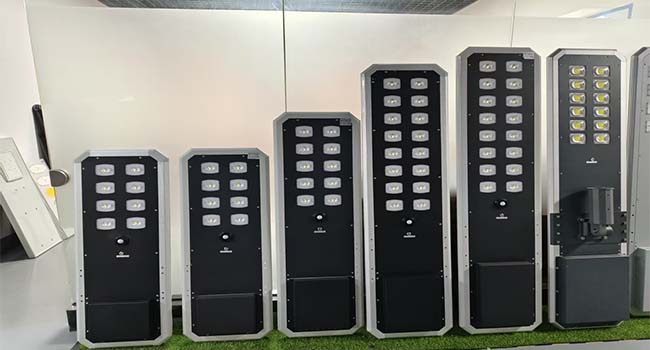
Solar Panel Efficiency
The conversion efficiency of solar panels directly affects the power generation capacity of the system. The higher the efficiency, the faster the charging speed and the more stable the range under the same light conditions. Currently the mainstream solar panels are divided into monocrystalline silicon and polycrystalline silicon two types, monocrystalline silicon panel conversion efficiency can reach more than 20%, the advantage lies in the high efficiency, fast charging, and in the low-temperature environment, stable performance, suitable for areas with insufficient light, such as coastal rainy areas, forested roads, cloudy cities or areas with short sunshine hours.
Polycrystalline silicon panel conversion efficiency between 15%-18%, slightly lower than monocrystalline silicon efficiency, but cost-effective and stable, suitable for sunny open areas, such as suburban roads, rural areas, industrial parks without shade. It should be noted that the solar panels should be tilted 30-45 degrees during installation to avoid being shaded by trees and buildings during peak sunlight hours, in order to maximize the capture of solar energy.
Battery Type & Capacity
Battery is the core of energy storage, and its type and capacity directly determine the endurance and service life of the street light, and different types of batteries have obvious differences in performance, service life and cost. The service life of lead-acid batteries is about 2-3 years, the core advantage is low price, suitable for short-term projects with limited budget, but there is a large weight, need for regular maintenance, and high maintenance costs for long-term use. The service life of lithium batteries can reach 5-8 years, light weight, maintenance-free, and high energy density, can store more power in a smaller volume, is currently the first choice for most residential and commercial scenarios, although the price is higher than the lead-acid batteries, but the long-term use of more cost-effective.
Lithium iron phosphate batteries (LiFePO4) have the longest service life, up to more than 8 years, high safety (not easy to overheat and fire), and can withstand extreme temperatures, suitable for harsh environments (such as high temperature, low temperature areas) or long-term projects (such as municipal roads, industrial zones), but the price is relatively the highest.Battery capacity is measured in Ah, the larger the capacity, the longer the endurance, which needs to be matched with the endurance requirements, for example, a 12V 100Ah battery can support 30W LED light source to work continuously for 10-12 hours.
Working Time
Duration is an important embodiment of the street light's practical value, and should be selected according to the needs of the use scene: municipal roads, campuses and other public areas require long-time continuous lighting, it is recommended to choose 12-14 hours of duration products; low-traffic areas have lower requirements for duration, you can choose 6-8 hours of duration products, or “full brightness 4 hours + low brightness 8 hours” intelligent duration mode. Low-traffic areas require less battery life, so choose a 6-8 hour battery life or a “4 hours full + 8 hours low” intelligent battery life mode to meet basic lighting needs while saving energy.
Weather Resistance & Durability
Integrated solar street lights are installed outdoors and need to withstand harsh environments such as wind, rain, sun, dust and salt spray for a long time, so weather resistance and durability are crucial. In terms of protection level, the minimum need to reach IP65 level, which can effectively prevent dust and resist low-pressure water spraying, applicable to ordinary outdoor environments without extreme weather; if there are extreme conditions such as torrential rain, sandstorms, coastal salt spray and other extreme conditions in the installation area, it is recommended to choose IP66 or IP67 level products, IP66 level can resist strong water spraying, and IP67 level can realize complete waterproofing and dustproofing, adapting to the harsher environment. IP66 can withstand strong water spray, while IP67 can realize complete waterproof and dustproof, adapting to more harsh environment.
Give priority to aluminum alloy or stainless steel for the housing material, these two materials have good corrosion resistance and UV aging resistance, which can effectively extend the service life of the street light and avoid the damage of the housing affecting the performance of the internal components. In addition, you also need to pay attention to the operating temperature range of the street light, most of the conventional models of the operating temperature of - 20 ℃ to 60 ℃, if installed in the cold or hot areas, you need to choose a wide range of special models, to ensure that the normal operation of the extreme temperature.
Installation & Maintenance
One of the core advantages of the integrated solar street light is convenient installation, and you need to pay attention to the installation-related details when selecting: the installation is divided into pole-mounted and wall-mounted two kinds of installation, pole-mounted for roads, parks, and other open spaces, and wall-mounted for building facades, alleys, and other narrow areas, which need to be selected according to the actual situation of the installation space.
Maintenance costs, should give priority to maintenance-free models, such as equipped with lithium batteries, sealed components of the product, can reduce the late maintenance workload and costs; at the same time need to confirm the manufacturer's warranty policy, the industry standard warranty period of 2-5 years, choose a long warranty period, after-sales response to the brand in a timely manner to effectively protect the rights and interests of the subsequent use and reduce the loss of failure.
Integration of solar street lights with sustainable, low-cost, easy to install the core advantages, has become the mainstream trend of outdoor lighting, selection, just clear their own needs, focusing on LED lighting performance, solar panel efficiency, battery quality, weathering, installation and maintenance of the core factors, while combining the local environmental conditions for adaptation, you can select cost-effective, long service life of the product.


